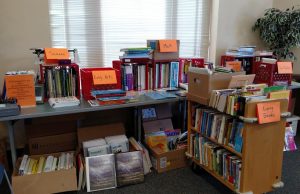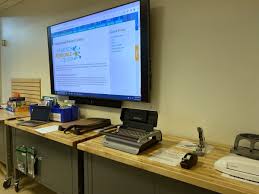As Stephens (2025) mentions in his Library as Classroom lecture, “libraries create and facilitate connections”. This is especially true when we think of the ways libraries have transformed their programming to fit the learning needs of their communities. In person and online learning opportunities have become the norm in libraries everywhere, as librarians step into roles as curators of the learning experience (Stephens, 2016). With community-driven course opportunities, libraries have stepped in to augment learning and have solidified themselves as part of the classroom experience. This is evident in the many educational programs in public libraries, as well as the development of online courses. The library has become a classroom and a place to learn from anywhere and everywhere.
When I think of the library as a classroom, my own experiences as a homeschooling parent come to mind. In the homeschool community, the library is an invaluable resource for enrichment, socializing, and supplementing education. In thinking of the future of teaching and learning, Lippincott (2015) discusses “active learning and learning as a social process” in terms of library collaboration with higher education institutes. This is something that particularly resonates with the homeschool community, as well. With a steadily growing homeschool population in the United States, libraries are well-positioned to provide active learning and teaching resources to homeschoolers, and many are already taking on this challenge.

At San Diego Public Library (SDPL) in California, they have developed a homeschool resource center to help home-based learners and their teaching parents. Johnsburg Public Library in Illinois has also developed a homeschool resource center. Both libraries provide curriculum materials and educational manipulatives available for check out, commonly needed office supplies and machines like laminators and copiers, as well as social and learning opportunities for homeschool families through clubs, classes, and more. The centers are designed as a large classroom, and are available to reserve for homeschool co-op meetings, programs, and more. These centers are open to anyone, not just homeschool families, but are designed to enrich the lives of home-based learners and educators. Johnsburg Library goes above and beyond, offering one-on-one meetings with the library’s educational consultant, provides information to local homeschool co-ops and groups, and breaks-down education and teaching philosophies for families. This high level of dedication to providing resources to library goers, and more specifically to homeschoolers, shows the depth of the ways libraries are adapting to the educational needs of their communities. With so many learning and social opportunities provided, libraries are an infinite learning resource for homeschoolers.


Recently, libraries have also ramped up their digital resources and online classes. This is useful to all library users, of course, but is yet another tool that really helps in home-based learning. Seattle Public Library (SPL) provides online access to a wealth of courses for all ages. From adult tutoring to online curriculum resources, SPL has taken the concept of library as a classroom to the next level! SDPL also hosts many online learning opportunities and has organized these resources by grade level and subject in the homeschool resource center section of their site, with Johnsburg Library also hosting a specific area of their site for online homeschool resources.
In the most literal sense, the library is what homeschoolers look to as their classroom. Homeschoolers are always in search of enrichment opportunities for their children that have the added benefit of socializing or a learning experience. The library is often used to achieve all these things wrapped into one. Libraries have come a long way in their work to serve their communities as educators, and the ways they benefit homeschoolers are virtually endless. Libraries and librarians are partners in teaching our communities and the possibilities in these endeavors are endless—they are wholly and truly “spaces of infinite learning” (Stephens, 2014).
References:
Lippincott, J. (2015). The future for teaching and learning. American Libraries. https://americanlibrariesmagazine.org/2015/02/26/the-future-for-teaching-and-learning/
Stephens, M. (2014). YLibrary?: Making the case for the library as space for infinite learning.
Stephens, M. (2016). The heart of librarianship: Attentive, positive, and purposeful change. ALA Editions.
Stephens, M. (2025). Library as classroom. [Video] Panopto recording. https://sjsu-ischool.hosted.panopto.com/Panopto/Pages/Viewer.aspx?id=c716d09f-f8cf-4a08-bef8-af34011f855e
Leave a Reply